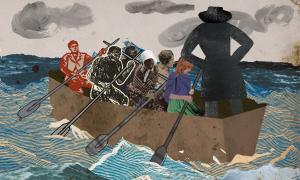Join the conversation on priority social justice, civics and democracy issues and find resources, suggestions and news.
Remembering the “Lost Cause”
Recently my family stopped at the Civil War battlefield at Vicksburg, Miss., to take a walk and soak in some history. Near the monument to Louisiana’s troops stood a young boy, about 8 or 9, with his mom and dad. The boy was dressed up as a gray-clad Confederate soldier. The combination of the outfit and the Confederate flag sticker on his family’s car told me something important about this boy. It told me that he was a lot like me at that age.


